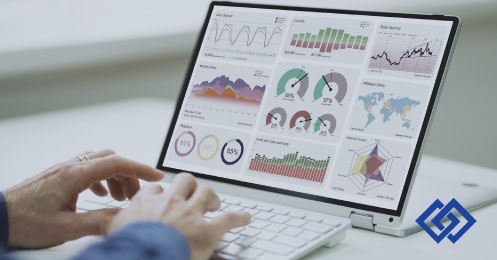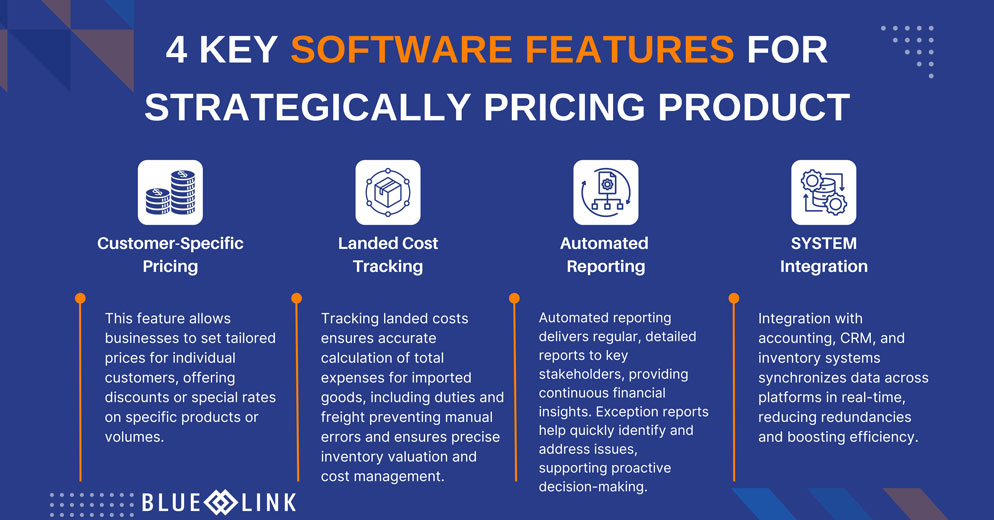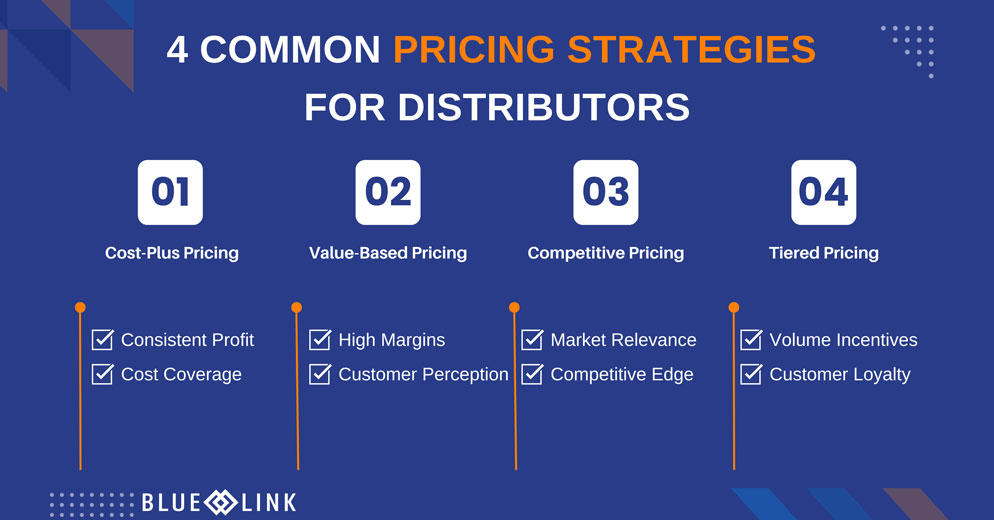In today’s competitive market, effective pricing strategies are crucial for distributors aiming to maximize profitability. The right pricing software can not only streamline pricing processes but also provide invaluable insights into cost management and product margins. This guide explores the importance of pricing products effectively to maximize profitability for distributors, various pricing strategies, and essential features of pricing software that can help your business thrive.
Several factors can affect your bottom line, making it crucial to monitor each one closely. Direct product costs might increase due to vendor pricing, whether from manufacturers or other distributors. Indirect costs, such as land or carrying expenses, may also rise. Regardless of the cause for shrinking margins, maintaining profitability requires vigilant oversight, which is significantly easier with the right software system in place.
Entry-level software systems may not offer the accurate and granular data obtainable from a sophisticated inventory and accounting system. Ask yourself how long it takes you to get information out of your current software system and add that to the costs we discussed above. Okay, so now you’re thinking that your software system might not cut it. Your next question is, “How would an appropriate software system allow me to keep an eye on my costs and appropriately price my products?”
Key Takeaways
- Importance of Pricing Software: Pricing software is an essential tool for modern distribution businesses to automate pricing analytics, optimize strategies, and make efficient pricing decisions.
- Key Benefits of Pricing Software: Real-time pricing adjustments, better pricing decisions, price optimization, comprehensive audit histories, and competitive strategies through competitor monitoring.
- Key Features of Pricing Software: Customer-specific and contract pricing, landed cost tracking, automated reporting, and integration with accounting, CRM, and inventory management systems.
- Business Impact of Pricing Software: Adopting pricing software can lead to meaningful gross margin improvements, data-driven pricing decisions, and enhanced profitability.
What Is Pricing Software?
In today’s complex business landscape, pricing decisions play a critical role in determining a company’s success. Gone are the days of manual spreadsheet calculations; instead, businesses turn to pricing software to optimize their pricing strategies. It is a great example of a business process automation software that can positively impact the profitability and efficiency of a business.
But what exactly is pricing software, and why is it essential for modern organizations?
Defining Pricing Software
At its core, pricing software is a commercially available application designed to automate pricing analytics, optimization, and execution. It empowers organizations to make efficient and effective pricing decisions. Here’s how it works:
- Data Processing: Pricing software processes large amounts of historical data, including market conditions, competitive analysis, promotions, product availability, and revenue goals.
- Optimal Price Recommendation: Using advanced methods, it quickly generates optimal price recommendations for goods and services.
- Real-Time Pricing: The software considers pricing rules, benchmarks, promotional pricing, customer-specific pricing, and exceptions.
Benefits of Pricing Software
Adopting pricing software offers several advantages:
- Real-Time Pricing: Businesses can adjust prices dynamically based on market changes, ensuring competitiveness.
- Better Pricing Decisions: Decision-makers anticipate the impact of price changes using visual summaries. These reveal where income is lost due to high prices or margin erosion from low prices.
- Price Optimization: Achieving the highest possible price while sustaining profit and revenue growth.
- Audit History: Comprehensive records of pricing changes allow for historical analysis and informed decision-making.
- Moving Beyond Cost-Plus: Pricing software encourages price segmentation and value-based selling.
- Competitive Strategy: Hourly, daily, or weekly monitoring of competitors’ prices provides a competitive edge.
- Strategic Opportunities: Identifying up-selling and cross-selling opportunities to maximize deal sizes.
Maximizing the Benefits of Pricing Software
To fully leverage pricing software, consider these best practices:
- Alignment: Ensure senior leaders are aligned on pricing strategy to avoid limiting the tool’s usefulness.
- Careful Selection: Choose the right pricing solution for your business needs.
- Effective Adoption: Train users and integrate the software seamlessly into existing processes.
- Continuous Use: Regularly review and adjust pricing strategies based on real-time data.
In summary, pricing software is a powerful tool that enables businesses to navigate the complexities of pricing in today’s competitive markets. It is one of the main ERP software features included in Blue Link ERP Software. By adopting it, companies can achieve gross margin improvements of up to 3% and make data-driven pricing decisions that drive growth and profitability.
Key Features of Pricing Software
The right pricing software incorporates features that simplify complex pricing tasks and provide deeper insights into cost management. Here are some essential features to look for:
1. Customer-specific and Contract Pricing
Customer-specific pricing cannot be more straightforward; it is simply the ability to specify pricing on a per-customer basis. Some customers may receive discounts or specific preferential prices on all products they purchase, while others may receive discounts (or contract prices) on particular items.
Pricing rules should also be able to be applied at a per-item level for all customers and for varying volume levels. Appropriate software will also allow you to set prices based on different units of measure (each, box, etc.) as well as in various currencies.
2. Landed Cost Tracking
Landed cost tracking may be most relevant for distributors that import their product, but is still an important part of identifying the true costs associated with a product; right up until it is sitting on your shelf. These costs may include brokerage, duty, freight, and more. Without proper landed cost tracking your inventory costs may be inaccurate or may require an abundance of manual work to arrive at accurate costs.
3. Automated Reporting
Sophisticated systems will allow for the automated delivery of reports to key decision-makers in your organization. These detailed reports can be scheduled to be sent on a daily, weekly, or monthly basis and will allow you to pin down exactly where your money is going and identify problem areas. In particular, exception reports delivered automatically facilitate timely and focused action to deal with these problems.
4. Integration with Other Systems
Integration with accounting, CRM, and inventory management systems ensures synchronized data, reducing redundancies and enhancing overall efficiency. This interconnected approach allows for real-time updates, improved data accuracy, and streamlined operations across all departments, ultimately leading to better decision-making and increased productivity.
The Importance of Pricing for Distributors
Pricing is a critical component of a distributor’s overall strategy. Properly managed pricing can directly impact profitability, customer satisfaction, and market competitiveness. Factors influencing pricing decisions include direct product costs from vendors, indirect costs such as landed or carrying costs, and market demand fluctuations. Managing these factors efficiently ensures healthy margins and sustained profitability.
Key Considerations:
- Direct Product Costs: Prices set by manufacturers and other distributors.
- Indirect Costs: Landed costs, duties, brokerage fees, and freight.
- Market Demand: Fluctuations affecting supply and demand dynamics.
Pricing Strategies for Distributors
Distributors play a crucial role in the supply chain, bridging the gap between manufacturers and retailers. Their pricing decisions impact both their own profitability and the success of their retail partners. Implementing effective pricing strategies can significantly enhance profitability while maintaining strong relationships with retailers. Here are some key considerations and commonly adopted strategies for effective distributor pricing:
Maximizing Margins and Retailer Satisfaction
- Margins: Distributors must strike a delicate balance between maximizing profit margins and keeping retailers content. Margins represent the difference between the purchase price from manufacturers and the selling price to retailers. Finding the sweet spot where healthy margins and competitive prices coexist is essential.
- Costs: Beyond the cost of goods sold, distributors incur various expenses such as transportation costs, storage fees, and international tariffs. These costs must be factored into pricing decisions to protect margins.
Long-Term Relationships
- Mutual Trust: Building strong distributor-retailer relationships based on trust can lead to sustained success. Sometimes, prioritizing long-term trust over short-term gains is more beneficial, fostering lasting partnerships.
Strategic Thinking and Value Capture
- Market Perspective: Adopting a long-term market perspective is crucial. Strategic thinking involves considering the broader context and anticipating market shifts rather than focusing solely on short-term profits.
- Value Delivery: Distributors must ensure they capture the value they provide, which includes not only the product itself but also services like timely delivery, inventory management, and customer support.
Pricing as a Process
- Continuous Evaluation: Pricing should be treated as an ongoing process, not a one-time project. Regularly assessing pricing strategies, monitoring market dynamics, and making adjustments as needed are critical.
Commonly Adopted Pricing Strategies for Distributors
1. Cost-Plus Pricing
A straightforward approach where a fixed percentage is added to the cost of goods to determine the selling price. This method ensures all costs are covered while providing a consistent profit margin.
2. Value-Based Pricing
Prices are set based on the perceived value to the customer rather than the cost of the product. This strategy can lead to higher profit margins, especially for unique or high-demand products.
3. Competitive Pricing
Setting prices based on competitor pricing helps maintain competitiveness in the market. This strategy requires regular monitoring and adjustments to remain relevant.
4. Tiered Pricing
Offering different pricing levels based on customer segments or purchase volumes encourages larger orders and rewards loyal customers with better pricing.
By integrating these considerations and strategies, distributors can effectively manage their pricing to maximize profitability, foster strong retailer relationships, and maintain a competitive edge in the market.
Take Control of Your Pricing Strategy Today
Choosing the appropriate pricing software is pivotal for distributors aiming to optimize their pricing strategies and maintain competitive margins. By incorporating features like customer-specific pricing, landed cost tracking, and automated reporting, businesses can gain a comprehensive view of their pricing dynamics and make informed decisions that drive profitability.
For more insights into how pricing software can benefit your distribution business, explore our comprehensive resource library or contact us for a personalized demo.
FAQs
1. What is Pricing Software?
Pricing software is a specialized application designed to automate the processes of pricing analytics, optimization, and execution. It leverages data processing to generate optimal price recommendations, adjust prices in real-time, and record all pricing changes for historical analysis.
2. How Does Pricing Software Benefit Distributors?
Pricing software offers numerous benefits for distributors, including real-time pricing adjustments based on market changes, better pricing decisions through visual summaries, price optimization to ensure profitability, comprehensive audit histories, and enhanced competitive strategies through regular monitoring of competitor prices.
3. What Are the Key Features to Look for in Pricing Software?
Essential features to look for in pricing software include customer-specific and contract pricing, which allows for tailored pricing; landed cost tracking to determine the true cost of imported products accurately; automated reporting for timely decision-making, and seamless integration with other systems like accounting, CRM, and inventory management for synchronized data and enhanced efficiency.
4. How Can Pricing Software Improve Gross Margins?
By adopting pricing software, businesses can implement advanced pricing strategies that are data-driven and market-responsive. This can lead to significant gross margin improvements, thanks to better pricing decisions, optimized pricing schemes, and the ability to react quickly to market and cost changes.












